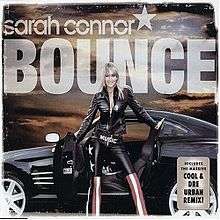Lazy
Lazy may refer to:
Music
Songs
See also

Lazy (Suede song)
"Lazy" is the fourth single from the album Coming Up by Suede, released on April 7, 1997, on Nude Records. It was also the fourth single from the album to reach the top ten, peaking at number nine.
The video for the title song was directed by Pedro Romhanyi, who previously made the video for the band's songs, "Animal Nitrate", "Beautiful Ones" and "Saturday Night", making this his third video from the album. "Lazy" was produced by Ed Buller, other tracks by Bruce Lampcov.
The song "Digging a Hole" on CD2 features keyboard player Neil Codling on lead vocals.
Track listings
References
Lazy (Orlová)
![]() Lazy (Polish: Łazy ) is a village in Karviná District, Moravian-Silesian Region, Czech Republic. It was a separate municipality but became administratively a part of Orlová in 1946. It has a population of 274.
Lazy (Polish: Łazy ) is a village in Karviná District, Moravian-Silesian Region, Czech Republic. It was a separate municipality but became administratively a part of Orlová in 1946. It has a population of 274.
The name is cultural in origin and in Polish denotes an arable area obtained by slash-and-burn technique.
History
The settlement was first mentioned in a Latin document of Diocese of Wrocław called Liber fundationis episcopatus Vratislaviensis from around 1305 as item in Lazy villa Paczconis. It meant that the village was in the process of location (the size of land to pay a tithe from was not yet precise). The village could have been founded by Benedictine monks from an Orlová abbey and also it could a part of a larger settlement campaign taking place in the late 13th century on the territory of what would later be known as Upper Silesia.
Politically the village belonged initially to the Duchy of Teschen, formed in 1290 in the process of feudal fragmentation of Poland and was ruled by a local branch of Silesian Piast dynasty. In 1327 the duchy became a fee of the Kingdom of Bohemia, which after 1526 became part of the Habsburg Monarchy.

Aaron's Party (Come Get It)
Aaron's Party (Come Get It) is American pop singer Aaron Carter's second studio album serving as the follow-up to his international debut album. This album was released in the fall of 2000 becoming the first album under Jive Records. This album was also certified 3× Platinum by the RIAA for selling over 3 million copies in the United States making it Aaron's most successful album. The lead single "Aaron's Party (Come Get It)" was featured on the 2000 compilation album Now That's What I Call Music! 5.
Track listing

Bounce (Sarah Connor song)
"Bounce" is a song by German recording artist Sarah Connor, taken from her second studio album, Unbelievable (2002). Written by Bülent Aris, Toni Cottura, and Anthony Freeman, with production helmed by the former, the uptempo pop song samples Mary J. Blige's 2001 song "Family Affair", while featuring guest vocals by Wyclef Jean. "Bounce" was originally released as the album's fourth and final single in Central Europe on 21 July 2003, amid Connor's first pregnancy. It reached the top twenty in Austria, Germany, Switzerland, and Walloon Region of Belgium.
In winter 2003 radio programmers Tod Tucker and Matt "the bratt" Derrick at 106.9 K-HITS in Tulsa, Oklahoma took hold of a copy of the single and began to give it airplay. Due to large amounts of airplay in the United States, the song reached number eleven on Billboard's Top 40 Mainstream and number twenty-one on Top 40 Tracks charts, eventually charting on the Billboard Hot 100 at number fifty-four. "Bounce" was officially given a physical US release on 4 May 2004, serving as Connor's debut single there. It was also released in Australia and the United Kingdom, where it reached number 14 on both charts. The radio version of the song was featured on the 2004 compilation album Now That's What I Call Music! 15.
Bounce (golf)
In golf, bounce or bounce angle is the angle inscribed by the leading edge of a golfing iron (particularly a wedge), the sole of the club, and the ground. In plainer terms, bounce angle is an indication of how much the sole, or bottom-most part, of the club head lifts the leading edge. A high bounce angle (angles of 12–15° are not uncommon) indicates a sole which lifts the leading edge significantly, whereas a club with little or no bounce allows the leading edge to contact the ground without interference.
The purpose of introducing bounce into club head design is to control how easily wedges, with their steep angles of attack, penetrate the ground under the ball. A low- or zero-bounce club has a streamlined profile, and the sharp leading edge of the club will tend to cut into the ground readily. When this is undesirable, the use of a club with more bounce will cause the sole of the club to impact first, keeping the wedge from digging into the surface by causing it to "bounce" across the surface instead.
Podcasts:

